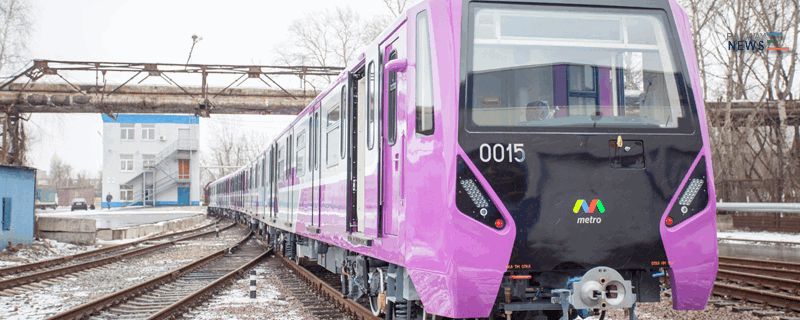RTS Link: Connecting Singapore & Johor Bahru

The Johor Bahru-Singapore Rapid Transit System (RTS Link): A Cross-Border Rail Project
This article delves into the significant progress made on the Johor Bahru-Singapore Rapid Transit System (RTS Link), a crucial cross-border rail project connecting Johor Bahru, Malaysia, and Singapore. The project, initially conceived in 2010 and formalized with a bilateral agreement in 2018, aims to alleviate traffic congestion between the two nations and significantly improve cross-border commute times. The RTS Link, a 4km twin-track railway line, is designed to accommodate a remarkable passenger capacity of 10,000 per hour in each direction. This article will examine the project’s progress, highlighting key milestones achieved, the engineering challenges overcome, and the broader geopolitical and economic implications of this ambitious undertaking. Furthermore, it will analyze the project’s potential impact on regional transportation and its role in fostering stronger economic ties between Malaysia and Singapore.
Connecting Span Completion: A Major Milestone
A pivotal moment in the RTS Link’s construction was the completion and installation of the 17.1-meter connecting span linking Pier 48 in Singapore and Pier 47 in Malaysia across the Straits of Johor. This 340-tonne structure represents a significant engineering feat, bridging the gap between the two countries’ respective sections of the marine viaduct. The successful completion of this span, celebrated by Prime Ministers Lee Hsien Loong of Singapore and Anwar Ibrahim of Malaysia, signifies substantial progress towards the project’s overall completion, currently estimated at approximately 65%.
Infrastructure Development and Engineering Challenges
Beyond the connecting span, the project encompasses the construction of extensive infrastructure, including numerous piers and viaduct segments on both the Malaysian and Singaporean sides. Singapore has already completed the installation of 12 concrete pile caps to support its 730-meter section of the viaduct. The project’s scale presents substantial engineering challenges, requiring meticulous planning, coordination, and the deployment of advanced construction techniques to ensure safety and efficiency. Navigating the complexities of working across an international border, coordinating resources, and adhering to different regulatory frameworks demand exceptional logistical expertise.
Geopolitical Significance and Economic Impact
The RTS Link transcends its function as a mere transportation infrastructure project. It serves as a powerful symbol of cooperation and collaboration between Malaysia and Singapore, strengthening bilateral relations and fostering economic integration. The project’s potential to reduce traffic congestion and significantly improve cross-border commute times will directly benefit tens of thousands of commuters daily, enhancing their quality of life and boosting economic activity in the region. The enhanced connectivity will facilitate cross-border trade, tourism, and investment, further solidifying the economic interdependence of both nations.
Project Timeline and Future Outlook
While significant progress has been achieved, the RTS Link is not yet operational. The project is expected to be completed and commence passenger services in December 2026. The successful completion of the project hinges on continued collaboration between the two governments, efficient project management, and the effective mitigation of any unforeseen challenges. The recent withdrawal of some Japanese companies from bidding on another high-speed rail project between Kuala Lumpur and Singapore underscores the importance of securing consistent government funding and transparent project management to maintain investor confidence and ensure the timely and successful delivery of large-scale infrastructure projects. The RTS Link’s successful completion will not only provide a significant improvement in cross-border transportation but also serve as a model for future infrastructure collaborations between nations.
Conclusions
The Johor Bahru-Singapore Rapid Transit System (RTS Link) represents a significant engineering and diplomatic achievement. The completion of the connecting span across the Straits of Johor marks a critical milestone in this ambitious project, showcasing the successful collaboration between Malaysia and Singapore. The project’s substantial progress, despite the inherent complexities of cross-border infrastructure development, demonstrates a strong commitment from both governments to enhancing regional connectivity and strengthening economic ties. The RTS Link, with its anticipated passenger capacity of 10,000 per hour in each direction, promises to dramatically alleviate traffic congestion and significantly improve cross-border commutes, benefiting tens of thousands of daily travelers. Beyond its immediate impact, the project serves as a testament to the power of international collaboration in addressing complex infrastructure challenges and fostering stronger economic and political relationships. The successful completion and operation of the RTS Link in December 2026 will not only provide tangible benefits to commuters but will also serve as a compelling case study for future large-scale cross-border infrastructure projects around the world. Furthermore, the project’s success emphasizes the crucial role of consistent government funding and transparent project management in securing investor confidence and ensuring timely project completion, particularly in the context of other high-profile rail projects in the region.





